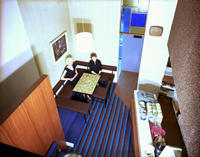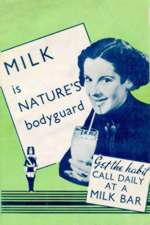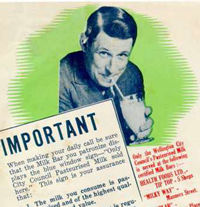Alexander Turnbull Library
National Library
New Zealand Film Archive
Ministry for Culture and Heritage
Wellington City Council Archives
Ans Westra
Click on images for enlargements and sources
Introduction
Who we are
This exhibition on the history of café culture in Wellington is a group project by seven graduate history students. We were the inaugural class of the Master of Public History (MPHist) offered by the History Department of Victoria University of Wellington.
In 2000, the Master of Public History programme was run part-time, enabling people already working in the field of public history to participate. Besides the required background in history and academic research, we brought to the project a variety of other skills and experience. This mix is the metaphorical caffeine that stimulated our group work.
How the group project arose
Two courses were offered in 2000, PBHY 501: �What is Public History?�, and PBHY 502: �Presenting the Past�. The latter focussed on the various ways in which history can be packaged for a general rather than a solely academic audience. The aim of the group project was to achieve a practical outcome in the form of an on-line exhibition. The subject�a history of Wellington café culture�was chosen because of its potential interest to a range of people. Presentation of the results of our research in a website exhibition was seen as a way of engaging a wide readership.
How we defined the subject
The date range chosen for our investigation into the history of Wellington�s café culture �1920�2000� covers a period in the city�s development when places selling food and drink were beginning to increase in number and develop distinctive characteristics. We do acknowledge that such establishments existed in Wellington before this time, although they may have been few and far between. We use the term �café culture� to convey the spectrum of activities, patronage and connections arising from the development and proliferation of cafés.
How we approached the job
First we chose seven different research topics. We designed our results for the web and wove them together to create this site. The original topics proposed�music, gender, ethnicity, class, age of patrons, techniques of coffee making, and how cafés have shaped Wellington�were rejected. Material on some of these topics was too thin to support a reasonably substantial narrative. Next we considered a chronological approach. This was more workable, and vestiges of that idea remain in the present approach. But it was seen as too arbitrary. We decided that the more we became enthusiastic about our topics, the more interesting our contributions would be. After much discussion we ended up with the present seven topics, incorporating themes such as gender, social class and age of patrons where these were significant.
Sources
We used written sources such as books, articles, newspapers, magazines, manuscripts, and local directories. Other information came from archived tapes and films, interviews, on-the-spot investigation and, of course, our own past experience.



